#Richard Mulcahy
Text
#OTD in 1921 – Éamon de Valera is re-elected President of Dáil Éireann.
“If war comes upon us, it will come as a thief in the night.” –Éamon de Valera
Éamon de Valera’s title was not recognised by Britain. He would remain President until defeated upon the vote on the Treaty in January 1922. The history of Ireland is full of many grim ironies. He was proposed for President by Sean Macon and seconded by Richard Mulcahy — both of whom later line up against him in the…

View On WordPress
#Éamon De Valera#Dáil Eireann#History#History of Ireland#Ireland#Irish Civil War#Irish History#Irish War of Independence#President#Richard Mulcahy#Sean MacEoin
13 notes
·
View notes
Text
Recap of the Irish War of Independence
One cannot talk about or understand the Irish Civil War without understanding the Irish War of Independence. In fact, I’ve seen more and more historians argue that we can think of the Irish War of Independence and the Irish Civil War as one big civil war, since the Royal Irish Constabulary, the IRA’s main enemy before the Black and Tans arrived, were Irish themselves and IRA intimidated, harassed, and executed Irish people who they considered “informers and traitors.” Additionally, many of the hopes, dreams, and aspirations initiated by the women’s liberation moment of 1912, the Lockout of 1913, and Easter Rising were further refined by the Irish War of Independence, and contributed to the violent schism in Irish Society following the signing of the Anglo-Irish Treaty. These aspirations and goals would further be redefined by the Irish Civil War with participants of all sides feeling like they lost more than they gained from the entire affair.
Thus, why I feel it’s important to recap the major events of the Irish War of Independence
Leading Up to the Irish War of Independence
Ireland has always been a place of debate, uprisings, and desire for change, but in the early 1900s there were three movements that paved the way for the Irish War of Independence: the Suffragette Movement of 1912, the Gaelic Revival, the 1913 Lockout, the Home Rule Campaign and Easter Rising. I’ve discussed all four movements in great detail in the first season, but in summary, the Suffragette Movement, the Gaelic Revival, and the 1913 Lockout created an environment of mass organizing and brought together many activists and future revolutionaries. The Home Rule Campaign, combined with WWI, created the conditions for a violent uprising.
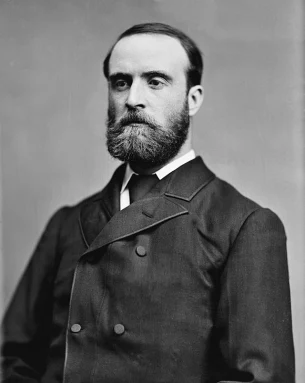
Charles Parnell
[Image description: A black and white photo of a white man with a high forehead and a thick, round beard. He is wearing a white button down and black tie and a grey double breast jacket.]
British Prime Minister Gladstone introduced the concept of Home Rule in 1880, with support from one of Ireland’s most famous statesmen: Charles Parnell. The entire purpose of Home Rule was to grant Ireland its own Parliament with seats available to both the Catholic majority and the Protestant minority and current power brokers). However, Parnell destroyed support for Home Rule by being involved in a messy and scandalous divorce and the Irish Republican Brotherhood (IRB), the precursor to the Irish Republican Army (IRA), scared the British government with their terrorist attacks. Home Role went through another failed iteration, but John Redmond was confident he would get the third iteration passed. This newest iteration was introduced to Parliament in 1914 and have created a bicameral Irish Parliament in Dublin, abolished Dublin Castle (the center of British power in Ireland), and continued to allow a portion of Irish MPs to sit in Parliament. It was supported by many nationalists in Ireland, barely tolerated by the Asquith Administration, and despised by the Unionists.
The Unionists believed they had a reason to worry. They had not forgotten the Protestants slaughtered during the 1798 Uprising nor the power they lost through the machinations of O’Connell and Parnell. Facing a massive change in their lives should Home Rule pass, the Unionists took a page out of the physical force book and created their own paramilitary organization: the Ulster Volunteers. The Asquith government knew of the Ulster Volunteers, their gun smuggling, and their drilling, but did nothing except delay Home Rule as long as possible.
Asquith’s delaying tactics and the creation of the Ulster Volunteers made Irish Nationalists nervous and they took matters into their own hand. Arthur Griffith, an Irish writer, politician, and the source of inspiration for many young rebels created the political party, Sinn Fein. Griffith argued for a dual monarchy approach, similar to the Austrian-Hungary model. He believed Ireland and England should be separate nations, united under a single monarchy. He also introduced the concept of parliamentary absenteeism i.e., Sinn Fein was a political party that would never sit in British Parliament, because the parliament was illegitimate.
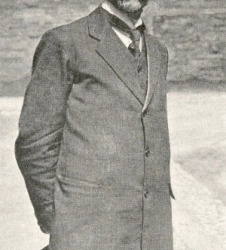
Eoin MacNeill
[Image description: A black and white picture of a tall man in a courtyard. He has a high forehead, wire frame glasses, and a shortly trimmed beard. He is standing with his hands behind his back holding a hat. He is wearing a white button down, a tie, a vest, and a suit jacket and grey pants.]
In response to the Ulster Volunteers, Eoin McNeill and Bulmer Hobson created the Irish Volunteers. Both men believed that the Irish wouldn’t stand a chance in an uprising against the British government and their best bet was to trust Redmond to pass Home Rule. The Irish Volunteers were created in order to defend their community from Unionist attacks. Things were tense in Ireland, but it seemed that parliamentary politics could save the day and the extremists would be pushed to the sidelines.
Then World War I began.
The British used the war to pass Home Rule but delay it taking affect for another three years. To add insult to injury, John Redmond encouraged young Irishmen to enlist in the British Army and fight for the Empire. McNeill and Hobson tried to convince its members to continue to trust Redmond, although they were angry that he was recruiting for the war. Yet, there was a handful of Irish Volunteers, who were also members of the resurrected IRB believed England’s difficulty, Irish opportunity.
They were Tom Clarke, Sean MacDiarmada, Padraig Pearse, Thomas MacDonagh, Eamonn Ceannt, and Joseph Plunkett. These men, plus James Connolly of the Irish Citizen Army, would sign the Proclamation of the Irish Republic and it would serve as their death warrant.
They knew they would not be able to win without arms and support, so, keeping their plans to themselves, they sent Roger Casement to Germany to present their plans for a German invasion that would coincide with an Irish rising. The Germans rejected this plan (maybe remembering what happened in 1798, when the French made a similar landing, weeks after a massive Irish uprising), but promised to send arms.
The Irish Volunteers were often seen drilling and practicing for some vague rebellion, so it wasn’t suspicious to the authorities or to MacNeil and Hobson to see units marching around. When Pearse issued orders for parade practice on April 23rd, Easter Sunday, MacNeil and Hobson took it at face value while those in the know, knew what it really meant. This surreal arrangement would not last for long and the committee’s secrecy nearly destroyed the very rising it was trying to inspire.
The first bit of trouble was Roger Casement’s arrest. The Germans were less than supportive of the uprising, and Casement boarded the ship Aud to return to Ireland to either stop or postpone the rising. However, when he arrived in Ireland on either April 21st or 22nd, he was pick up by British police and placed in jail.

Pearse Surrenders
[Image description: A faded black and white photo of three men standing on a street in Dublin. There are two man on the left and they are wearing the khaki cap and uniform of the British army. On the right is a man wearing a wide brim hat and a long black jacket]
Then MacNeil and Hobson had their worst suspicions confirmed-Pearse and his comrades were secretly planning a rebellion without their support. MacNeill vowed to do everything (except going to the authorities) to prevent the Rising and sent out a counter-order, canceling the drills scheduled for Sunday. This counter-order took an already confused situation and turned it into a bewildering disaster. Units formed as ordered by Pearse and dispersed with great puzzlement and some anger and frustration. Pearse and his comrades met to discuss their next steps and decided the die had been cast. There was no other choice except to try again tomorrow, Monday, 24th, April 1916.
Easter Rising was concentrated in Dublin with a few units causing trouble on the city’s outskirts. The Irish rebels fought from Monday to Friday, surrendering Friday morning. The leaders of the rising were murdered, but many future IRA leaders such as Eamon DeValera, Michael Collins, Richard Mulcahy, Constance Markievicz, Liam Lynch, and others survived. They were sent to several different prisons, the most famous being Frongoch where Collins was held. The IRB turned it into a revolutionary academy and practiced their organizing and resistance skills while formalizing connections and relationships. When they were released starting in December 1916, they were ready to take those skills back to Ireland.
Creation of the IRA and the Dail
Their approach was two pronged: winning elections and rebuilding the Irish Volunteers/ Irish Republican Brotherhood.
When the prisoners were released, the Irish population went from hating them for launching a useless rebellion to cheering their return. The English helped flame the revolutionary spirit in Ireland by proclaiming Easter Rising a “Sinn Fein” rebellion and arresting many Sinn Fein members who had nothing to do with the Rising. This made it clear Sinn Fein was the revolutionary party while John Redmond’s party was out of touch.
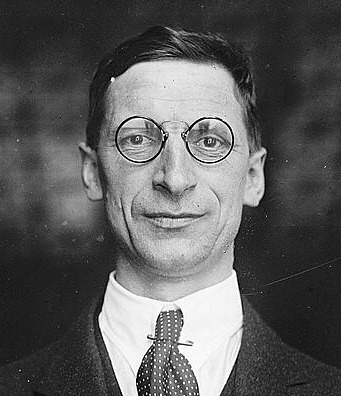
Eamon de Valera
[Image description: A black and white photo of a white man with a sharp nose and large, circular glasses. He has black hair and is wearing a white button down shirt, a polka dotted tie, and a grey suit.]
Sinn Fein ran several candidates such as Eamon DeValera, Michael Collins, and Thomas Ashe. Ashe would be arrested while campaigning and charged with sedition. While in jail, he went on hunger strike and was killed during a force feeding. Following an Irish tradition, Sinn Fein and the IRB turned Ashe’s funeral into a political lightning rod. They organized the funeral procession, the three-volley salute, and Collins spoke over Ashe’s grave: “There will be no oration. Nothing remains to be said, for the volley which has been fired is the only speech it is proper to make above the grave of a dead Fenian.”
On October 26th, 1917, Sinn Fein would hold their first national convention. During the convention, Eamon DeValera replaced Arthur Griffith as president and Sinn Fein dedicated itself to Irish independence with the promise that after independence was achieved the Irish people could elect its own form of government. However, there was still tension between those who believed in passive non-violence and the militant Sixteeners. 1917-1918 was spent building a bridge between parliamentary politics and militant politics of the 1920s, with Sinn Fein’s large young membership pushing it in a more militant direction.
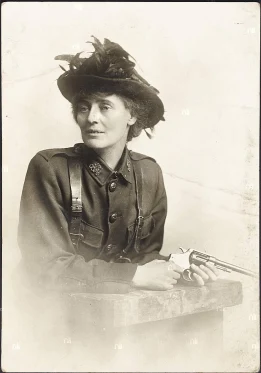
Constance Markievicz
[Image description: A sepia tone photo of a white woman looking to her right. She is leaning against a stool and holds a revolver. She wears a wide brim hat with black feathers and flowers. She has short hair. She is wear a military button down short and suspenders.]
Sinn Fein was also breaking social conventions, even though Cumann na mBan was still an auxiliary unit, Sinn Fein would allow four ladies on the Sinn Fein Executive and would run two women in the 1918 election-Constance Markievicz and Winifred Carney, with Markievicz becoming the first women to win a seat in parliament. Many of its supporters and campaigners were also women. In fact, many men would complain in 1917 and later that the women were more radical than the men. Cumann na mBan fully embraced the 1916 Proclamation and even had Hanna Sheehy-Skeffington deliver a message to President Wilson in 1918, asking him to recognize the Irish Republic. Cumann na mBan took the front line in the anti-recruitment campaign and the police boycott and the anti-conscription movement. Like the Volunteers, Cumann na mBan believed they were a military unit, although they never got arms for themselves and worked closely with Volunteer units and Sinn Fein clubs.
Irish Volunteers and IRB
While Sinn Fein was slowly rebuilding itself, the Irish Volunteers were also being resurrected from the ashes. It started with local initiatives led by men like Ernest Blythe, Eoin O’Duffy, and Sean Treacy. Units popped up in local communities, organized and armed by their local leaders and eventually contacting GHQ which consisted of men like Collins, Mulcahy, and Brugha. While local units were rebuilding themselves, Collins was using the IRB to form a strict corps of officers, a growing source of personal power as well as military power that men like Brugha and De Valera (who were IRB during Easter Rising, but renounced their membership after the rising failed) distrusted.
GHQ issued an order saying that units should only listen to orders coming from their own executive (in order to prevent the order-counter-order disaster that doomed Easter Rising) and swore the Volunteers would only be ordered into the field if commanders were confident of victory. No forlorn battles. Mulcahy, as Chief of Staff, worked hard to instill a military spirit and discipline into the Volunteers while understanding that their most effective unit at the moment was the company and local initiative. (The companies would expand into battalions and brigades as the war progressed, but the fighting and tactics would remain local and territorial) So, while trying to act like a regular army and expecting the Volunteers to respect their officers and GHQ, he also had to allow for local improvisation as well as trust the local executives to have control over their soldiers. It was a difficult balancing act he would struggle to maintain during the entire Anglo-Irish War and into the Irish Civil War and the formation of the Free Irish State.
The Irish Volunteers convention on October 26th, 1917, elected DeValera as president, Brugha as the chairman of the executive with Collins as director of organization and Mulcahy as director of training, Liam Lynch as Director of Communications, Staines, Director of Supply and Treasurer, O’Connor director of engineering.
All of this work could have been for nothing if the British hadn’t handed the IRA the greatest gift in the world: the 1918 conscription crisis.
Lightning Rod Issues
Food Shortage 1917-1918
Before conscription was the food shortages in the winter of 1917-1918. The shortage was created because of food being exported to Britain, invoking memories of the terrible famine. Sinn Fein could not stop all of the food being exported, but they did what they could to protest this newest version of starvation. For example, a member of Sinn Fein, Diarmund Lynch took thirty pigs meant to for exportation, killed them, and shared the food with hard hit families, earning him deportation to America, but becoming a local folk hero and increasing Sinn Fein’s prestige.
There were also agrarian tensions because grazers (those who used farmland for their cows to graze instead of growing crops) were given preference to available land so the Congested Districts Board could maximize profits. While this makes sense, it added to the great unease in the land, especially as the food shortage grew more acute.
The IPP grew out of the Land Wars of 1880s and Sinn Fein, ever aware of Irish history, decided it would be no different. It joined in the fight for land, arguing that all the ranch land should be broken up evenly. All over the country, Sinn Fein created commission to break up the land and figure out the pricing as well as organizing mass occupation of available land, but ranchers refused to acknowledge the prices Sinn Fein proposed.

1917 Electoral Victory March
[Image description: A black and white photo of several men and women marching together through a park with several tall green trees and a cobblestone wall. Leading the crowd are three men in long coats and wide brim hats playing bagpipes. Everyone else is wearing long coats, suit coats, or dresses and hats.]
The Irish Volunteers officially stayed out of the new land war, claiming it wasn’t military or political in nature, but local groups sometimes participated. This combined with Sinn Fein’s own land seizures could lead to painful confrontations with police and other anger Irish men, so it was a difficult job balancing non-violent and not starting a mass uprising.
Another tool Sinn Fein used was boycotting. Said to original in Ireland during the Land Wars and used to great affect by Charles Parnell, Sinn Fein boycotted the RIC. This was a serious threat to the British system, decreasing the pool of candidates it could recruit from for the RIC and training the people to view the RIC as “others,” the first step to making a population comfort with violent action.
Boycotting the RIC was an old idea, something Sinn Fein and the Irish Volunteers wanted to implement it as soon as they were released from prison. This became a strong tool of the Volunteers to ostracize those who were betraying the rebel cause by working for the British as well as prepare the citizens for a war mentality.
Conscription crisis
No one yet knew that World War I would be over by November 11th, 1918. British thought she was facing long years of further bitter sacrifices and they needed new blood. They looked at Ireland and its large set of unruly young men itching for a fight and introduced the Military Service bill, extending forced conscription to Ireland-giving the Volunteers a shot in the arm while also uniting the Irish political parties, for the first time ever.
The Sinn Fein, IPP, and the Catholic Church pledged to resist Britain’s efforts to conscript Irishmen. DeValera prepared a statement, meant for Woodrow Wilson, insisting that their resistance was a battle for self-determination and principles of civil liberty, similar to the American’s cause during America’s revolution. The Volunteers planned local actions as well, using the conscription crisis as a springboard for intensive recruiting and introducing the idea of militant resistance into the greater Irish consciousness. The boycott of the RIC increased tenfold during the anti-conscription movement, shocking the police and trapping them in their barracks in locations such as North Tipperary. Women were particularly effective implementers of the boycott. Eventually the boycott was expanded to include those who helped or associated with the police. The boycott didn’t force many police to resign, but it built a belligerent and hateful mindset against the police-allowing for later violence.

Anti-conscription Rally in Ballaghaderreen County
[Image description: A blur black and white photo of a large gathering of people. They are surrounding a wooden platform where as group of men stand. Above the platform there is a white banner that says: No conscription Stand United]
The Irish Volunteers were not as engaged with the conscription crisis as Sinn Fein, because they still didn’t have a doctrinal strategy in place. Instead, volunteers were told to avoid getting arrested and if the RIC tried to arrest them, to resist. The Volunteers held daily drills and parades and prepared for battle, should the order ever arrive. However, GHQ seemed more concerned with getting rifles and ammunition than ordering a massive uprising. Conscription allowed them to demand that the local area their units controlled give up their guns to the Irish Volunteers. Some Volunteers even bought rifles off RIC or local British soldiers. Lack of guns would be a problem that plagued the IRA through their war with the British. Conscription also saw a spike in people joining the Irish Volunteers. GHQ tried to manage this wave of volunteers by issuing orders regarding how men should be recruits and how they should be vouched for and accepted.
The Irish Volunteers allowed their own soldiers to elect their officers (how could this go wrong?) GHQ seemed to try and curb who could be elected like requiring that they be member of the IRB, but given the haphazard nature these units were created, but it was only somewhat successful, some units merging the Volunteers and IRB men seamlessly, while other companies were dominated by non-IRB men or vice versa.
They threatened mass slaughter should Britain try to enforce conscription and, apparently, there was a plan for Cathal Brugha to lead a group of men to assassin the British cabinet (relying on Collins and Mulcahy-who was now chief of staff-to recruit for this venture).
German Plot
The British back down on conscription in mid-May while also arresting 73 nationalist leaders from May 17-18 under the Defense of the Realm Act, including Eamon DeValera, Constance Markievicz, Arthur Griffith, and William Cosgrave. They claimed there was a German plot i.e., Sinn Fein was working with Germany-like the 1916 rebels did and the 1798 rebels with the French.
It quickly became clear how flimsy the excuse was, that there was scant information, and undermined the government’s credibility in Ireland. It successfully knocked Sinn Fein off its feet for a moment, especially since all nine of the twenty-one members of Sinn Fein’s Standing Committee were arrested, but the British failed to arrest some of the most dangerous rebels such as Collins, Brugha, Mulcahy, and Harry Boland. But in the long run, it boosted Sinn Fein’s cause and destroyed any chance IPP had of reclaiming the national narrative. As Constance Markievicz claimed, "sending you to jail is like pulling out all the loud stops on all the speeches you ever made…our arrests carry so much further than speeches.”
1918 Election
Sinn Fein had won a total of five elections between 1917 and 1918 (De Valera, Count Plunkett, Cosgrave, Patrick MacCartan, and Griffith) and lost two elections. 1918 was their first general election. The election was held on December 14th, 1918, and is considered one of the most important moments in modern Ireland’s history. It was the first election after the end of the First World War and, because of the Representation of the People Act, women over the age of 30 and working-class men over the age of 21 could vote, tripling the Irish electorate from 700,000 in 1910 to 1.93 million in 1918.
The IPP won only 6 seats, the Unionists took 26 seats, and Sinn Fein won 73 seats.
The Sinn Fein victory can be explained in three different ways:
The new electoral: women and working-class men: people who had been hardest hit by the war and the rising and the conscription crisis, as well as the good shortage in 1917.Not only was Sinn Fein and Irish Volunteers campaigning, but Cumann na mBan campaigned hard as well, possible driving people into the arms of Sinn Fein since Sinn Fein stood for a republic which was against everything as it currently was. iSinn Fein’s rivals: the IPP and Labour had been broken by WWI and needed to rebuild themselves and their reputations if they wanted to compete.
The clergy was on Sinn Fein’s side because of conscription. DeValera also went a long way to argue that anti-conscription was not anti-soldiers nor were they ignoring the sacrifice of the Irishmen who had fought in the war so far. But the crime was that Britain sacrificed the best Ireland had for a colonial war.
Curated candidates. Sinn Fein ran those it was confident would win and in seats that would not weaken its own position or risk schism with the Labor movement. Also, there was some election rigging and voter intimidation.
Instead of sitting in parliament, the Sinn Fein candidates would sit in a new parliament: the first Dail of Eireann.
The Dail
The First Dail was formed on January 21st, 1919. It held its first meeting in the Round Room of the Mansion house of Dublin and created a Declaration of Independence and the Dail Constitution. Only 27 minsters appeared because 34 were in jail or on secret missions. Sinn Fein invited the IPP and Unionists to participate but they refused. The declaration of independence ratified the Proclamation of the Republic of Easter Rising and outlined a socialist platform, but it was more of a propaganda message because there was only so much the Dail could realistically achieve while battling England.
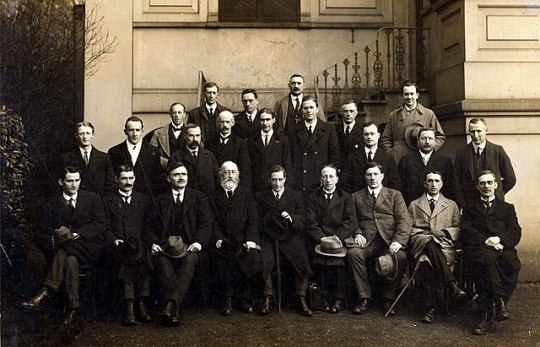
Members of the First Dail
[Image description: A black and white photo of three rows of men. The first row of men are sitting down on chairs, the second and third rows of men are standing. Most men are wearing black suits with white button down shirts and ties. Others are wearing tan or grey jackets. Some men had beards and mustaches, but most are clean shaven. Behind the men is a metal staircase and a white building.]
The constitution was a provisional document and created a ministry of the Dail Eireann. The ministry consisted of a President and five secretaries. First ministers of the Dail were:
Chairperson of the Dail: Cathal Brugha (because DeValera was in jail and Collins and Harry Boland were planning how to break him out)
Minister for Finance: Eoin MacNeill
Minister for Home Affairs: Michael Collins
Minister for Foreign Affairs: Count Plunkett
Minister for National Defense: Richard Mulcahy
The Dail expanded the number of ministers in April. It now included nine ministers within the cabinet and four outside the cabinet as well as a mechanism to create substitute presidents and ministers in the realistic event someone was arrested or killed.
This second ministry members were:
President: DeValera
Secretary for Home Affairs: Arthur Griffith
Secretary for Defense: Cathal Brugha
Secretary for Foreign Affairs: Count Plunkett
Secretary for Labour: Constance Markievicz
Secretary for Industries: Eoin MacNeill
Secretary for Finance: Michael Collins
Secretary for Local Government: W. T. CosgraveAustin Stacks would become minster after his release from jail and then took over as secretary for home affairs after Griffith became deputy president.
Once the Dail was convened, the Irish Volunteers saw themselves as an army of an Irish Republic hence why they named themselves the Irish Republican Army. They were formally renamed the IRA on August 20th, 1919, and took an oath of allegiance to the republic and to serve as a standing army.
On June 18th, 1919, the Dail officially established the Dail courts which were meant to replace the British judiciary. They eventually created several series of courts including a parish-based arbitration courts, district courts, and a supreme court which the people trusted more than the British courts. On June 19th, the Dail approved the First Dail Loan to raise funds they couldn’t raise via taxes. Collins would also create a bond scheme which helped keep the Dail and the IRA financially afloat.
England declared the Dail illegal in September 1919, but it was too little too late to undermine Ireland’s shadow government. DeValera left Ireland to fundraise in the United States, leaving Griffith as his Deputy President. The conduct of the Dail fell to its ministers while the conduct of the war fell to Collins, Mulcahy, Brugha, and the field commanders.
BRIEF Summary of Guerrilla Warfare in Ireland
The IRA would be broken into General Headquarters (GHQ) and local commanders. GHQ was run by Chief of Staff Richard Mulcahy who answered to Cathal Brugha, the Minister of Defense. Mulcahy also worked closely with Michael Collins, Minister of Finance and Intelligence and this amorphous command structure created a lot of tension amongst the three men. While Mulcahy tried to install discipline and standardization from GHQ, he was only partially successful as conditions on the ground often trumped whatever master plan GHQ had cooked up.

Richard Mulcahy
[Image description: A sepia toned photo of a thin white man with a prominent nose. He is wearing the military cap and uniform of the Irish National Army.]
It's estimated that the IRA had 15,000 members but only 3,000 were active at one time. The members were broken into three groups: unreliable, reliable, and active. Unreliable meant they were members in name only, reliable meant they played a supporting role, and active meant they were full-time fighters. It’s believed at least 1/5 of the active members were assistants and clerks. Skilled workers dominated the recruitment while farmers and agricultural workers were a minority. About 88% percent of the IRA members were under thirty and a majority of them were Catholics. The most active units were in Dublin County and Munster County which includes the cities of Clare, Cork, Kerry, Limerick, Tipperary, and Waterford.
The local units were supposed to be organized along the lines of a battalion but it was up to the local commanders, who were originally elected by their men. Initially, GHQ tried to assign two to three brigades to a county, but it would take a while before those brigades solidified. For the first year, the IRA could only muster small units, which actually worked in their favor.
Local commanders adopted the “flying columns” method of attack and GHQ eventually gave it their blessing. Flying columns consisted of a permanent roster of soldiers who worked together in small groups in coordinated attacks. The flying columns performed two kinds of attacks: auxiliary and independent
In an auxiliary attack, the flying column was assigned to a battalion as extra support for a large local operation already taking place. In an independent attack, the flying column itself would strike the enemy and retreat. This type of attack included harassing small military camps and police stations, pillaging enemy stories, interrupting communications, and eventually ambushes. The flying columns would become an elite and coveted unit but its soldiers were always on the run and relied on local support to survive.

Michael Collins
[Image description: A black and white photo of a white man shouting to a large crowd. He is standing outside on a platform, in the middle of a city street. He has short hair and is clean shaven. He is wearing a white shirt and a black suit.]
The IRA would go through two different reorganizations. The first occurred in March 1921. It broke up the brigade structure into small columns, built from experienced men. The brigade staff existed to provide supplier of arms, ammunition, and equipment while battalions provided the men for the columns. During the same reorganization, GHQ broke Ireland up into four different war zones to encourage activity in quieter areas.
In late 1921, the IRA was organized a second time. This time, GHQ created divisions. Division commanders were responsible for large swaths of territory, similar to the war zones created earlier that year. The purpose of the divisional commanders was to increase the likelihood of brigade and battalion coordination, make the IRA feel like it was growing into a real army, but still allowed (and encouraged) independent command, and transplant some of the administrative burden from GHQ to the divisional commanders. This was especially important if something were to happen to GHQ.
You can listen to season 1 to learn about specific battles. For the purpose of this recap, all you really need to know is that the IRA went from singular ambushes lead by ambitious local commanders to coordinated ambushes, assassinations (the most famous being Bloody Sunday carried out by Collins’ personal assassins), prison riots, hunger strikes, and outright assaults on barracks in the rural areas of Ireland. In addition to these military developments, the Dail supported the war effort by retaining the people’s support and maintaining the functionality of the Dail Courts and the Dail Loans.
The British responded by implementing martial law, launching large scale searches and arrests, curfews, roadblocks, and interment on suspicion and by creating the Black and Tans and the Auxiliaries. The Black and Tans arrived in Ireland on March 25th, 1920. They were meant to reinforce the RIC and recruited mostly British veterans. They were called black and tans because of their uniform (dark green which appeared black and khaki. They weren’t special forces, just normal reinforcements which may explain why they were known for their brutality and violence. The auxiliaries were founded in July 1920s as a paramilitary unit of the RICs. It consisted of British officers and were meant to serve as a mobile strike and raiding force. 2,300 men served during the war and they were deployed in the southern and western regions of Ireland – where fighting was the heaviest. They were absolute brutes, known for arson and cruelty.
The British wanted to subdue Ireland by the May 1921 election, so they sent over fifty-one battalions of infantry, however, confusion over the military’s role, the RIC’s role, an inability to coordinate amongst the army, RIC, Black and Tans, and Auxiliaries, and the implementation of martial law hurt British efforts.
The IRA were feeling the pressure. In early 1921, they suffered some of their most drastic defeats contributing to poor morale and disgruntlement with the Dail and GHQ. GHQ was losing control over local forces while also trying to maintain a guerrilla war on a shoestring budget. To make matters worse, DeValera returned from America in December 1920 and spent most of 1921 trying to reorganize the IRA and Dail according to his vision. His arrival exasperated already existing tensions amongst several ministers, including Collins, Mulcahy, and Brugha, and threatened to tear the IRA apart from the inside.
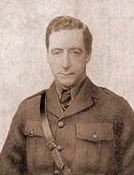
Cathal Brugha
[Image description: A sepia toned photo of a small and thin man in a military uniform and a white button down and stripped tie. He has short hair and is clean shaven. Behind him is a blank white wall.]
Despite all of this, by May 1921, the IRA had reached its peak and the crown forces suffered record losses. From the beginning of 1921 to July, the IRA killed 94 British soldiers and 223 police officers. This was nearly double the totals from the last six months of 1920. This was also when the IRA launched their most ambitious attacks such as their attack on the Shell factory which amounted to 88,000 pounds in damage and their assault on the Dublin Custom House destroying the inland revenue, stamp office, and stationery office records. In addition to these attacks, the IRA increased the number and sophistication of their attacks in what is now Northern Ireland. However, these attacks could be self-defeating as they only enraged the Ulster Volunteers and left the Catholic population at the mercy of angry Unionists. These attacks would convince the British that Ireland was already partitioned (even if Sinn Fein and the IRA refused to acknowledge the fact) and it was in their interest to protect Northern Ireland from IRA incursions. This meant another army and more money that could have been spent elsewhere.
It was clear that neither side could win this conflict through military efforts alone.
References:
The Republic: The Fight for Irish Independence by Charles Townshend, 2014, Penguin Group
Fatal Path: British Government and Irish Revolution 1910-1922by Ronan Fanning, 2013, Faber & Faber
Richard Mulcahy: From the Politics of War to the Politics of Peace, 1913-1924 by Padraig O Caoimh, 2018, Irish Academic Press
A Nation and Not a Rabble: the Irish Revolution 1913-1923by Diarmaid Ferriter, 2015, Profile Books
Eamon DeValera by Ronan Fanning, 2016, Harvard University Press
#Irish War of Independence#Irish History#Michael Collins#Richard Mulcahy#Irish Republican Army#IRA#Eamon Devalera#Cathal Brugha#Constance Markievcz#easter rising#history blog#queer historian#podcast episode#Spotify
10 notes
·
View notes
Text
Episode 62 - Electoral Pacts, Constitutions, and Kidnappings
Michael Collins takes a novel approach to avoiding civil war: election rigging and writing a constitution that will undermine the Anglo-Irish Treaty.
The British Government prefers direct action against the anti-treaty IRA members who took the Four Courts and may have assassinated Field Marshall Wilson.
Which option do you think seems more likely to avoid civil war?
Support this podcast by…
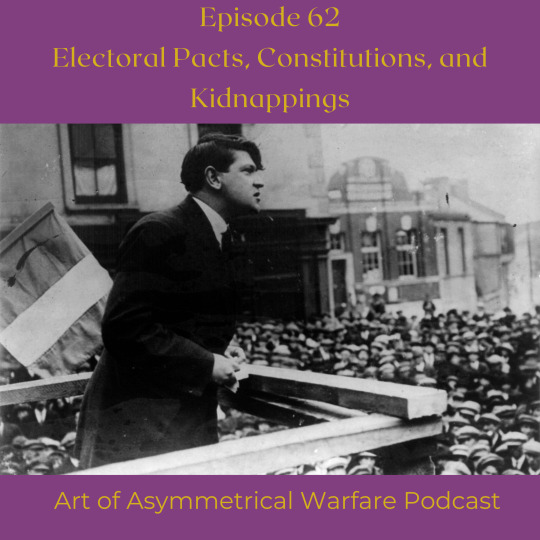
View On WordPress
#1922 general election#Assassination of Field Marshall Wilson#beginning of the irish civil war#collins and devalera electoral pact#Eamon Dalton#Field Marshall Wilson#Four Courts#IRA#Ireland#irish civil war#Irish Constitution#Irish Republican Army#Kidnapping of Ginger O&039;Connell#lloyd george#Michael Collins#Richard Mulcahy
0 notes
Text

Bad movie I have Moulin Rouge 2001
#Moulin Rouge#Nicole Kidman#Ewan McGregor#John Leguizamo#Jim Broadbent#Richard Roxburgh#Garry McDonald#Jacek Koman#Matthew Whittet#Kerry Walker#Caroline O'Connor#Christine Anu#Natalie Mendoza#Lara Mulcahy#David Wenham#Kylie Minogue#Ozzy Osbourne#Deobia Oparei#Linal Haft#Keith Robinson#Peter Whitford#Norman Kaye#Arthur Dignam#Carole Skinner#Jonathan Hardy#Plácido Domingo#Kiruna Stamell#Anthony Young#Dee Donavan#Johnny Lockwood
5 notes
·
View notes
Text
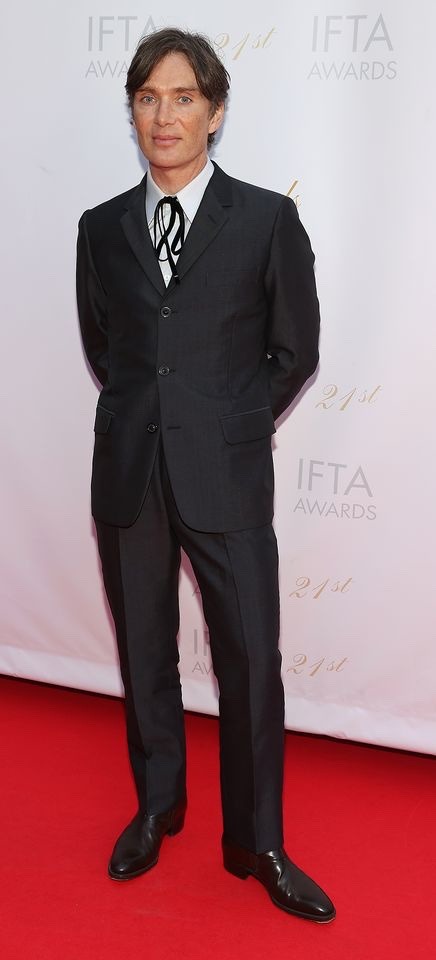
Cillian Murphy Named Best Actor at Irish Academy Awards pictured at the IFTA Awards 2024 at the Dublin Royal Convention Centre. Picture: Brian McEvoy

Agnes O'Casey won Lead Actress for Lies We Tell
Cillian Murphy wins Lead Actor, Agnes O'Casey wins Lead Actress while KIN picks up five awards including Best Drama at Irish Film and Television Awards 2024.
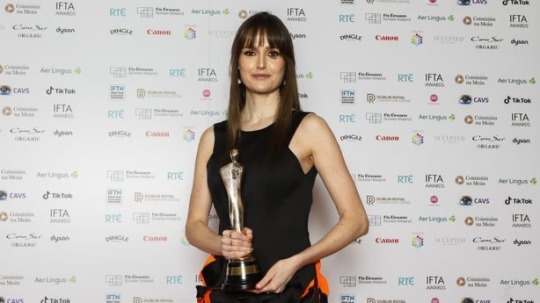
Clare Dunne won the IFTA for Lead Actress for KIN
KIN star Clare Dunne took her third IFTA when she won the award for Lead Actress in a Drama in a category which also included Sharon Horgan for Best Interests, Niamh Algar for Malpractice and Caitriona Balfe for Outlander.
Full list of IFTA 2024 winners:
Film Categories
BEST FILM
That They May Face the Rising Sun
DIRECTOR - FILM
Lies We Tell - Lisa Mulcahy
SCRIPT - FILM
Lies We Tell - Elisabeth Gooch
LEAD ACTOR - FILM
Cillian Murphy - Oppenheimer
LEAD ACTRESS - FILM
Agnes O'Casey - Lies We Tell
SUPPORTING ACTOR - FILM
Paul Mescal - All of Us Strangers
SUPPORTING ACTRESS - FILM
Alison Oliver - Saltburn
DRAMA CATEGORIES
BEST DRAMA
KIN
DIRECTOR - DRAMA
KIN - Kate Dolan
SCRIPT - DRAMA
KIN - Peter McKenna
LEAD ACTOR - DRAMA
Éanna Hardwicke - The Sixth Commandment
LEAD ACTRESS - DRAMA
Clare Dunne - KIN
SUPPORTING ACTOR - DRAMA
Richard Dormer - Blue Lights
SUPPORTING ACTRESS - DRAMA
Maria Doyle Kennedy - KIN
BEST INTERNATIONAL FILM
Oppenheimer
BEST INTERNATIONAL ACTOR
Paul Giamatti - The Holdovers
BEST INTERNATIONAL ACTRESS
Emma Stone - Poor Things
GEORGE MORRISON FEATURE DOCUMENTARY
The Days of Trees
LIVE-ACTION SHORT FILM
Calf
ANIMATED SHORT FILM
Wind & The Shadow
CRAFT CATEGORIES
CINEMATOGRAPHY
Poor Things - Robbie Ryan
COSTUME DESIGN
LOLA - Lara Campbell
PRODUCTION DESIGN
A Haunting in Venice - John Paul Kelly
HAIR & MAKE-UP
The Pope's Exorcist - Orla Carroll, Lynn Johnston
SOUND
Barbie - Nina Rice
ORIGINAL MUSIC
LOLA - Neil Hannon
EDITING
Still: A Michael J Fox Movie - Michael Harte
VFX
Dungeons & Dragons: Honor Among Thieves - Kev Cahill, Diana Giogiutti
#IFTA Awards
Posted 20th April 2024
7 notes
·
View notes
Note
Since you’re both a MASH fan and a Billy Joel fan…
Pick any phrase or word appearing in “We Didn’t Start the Fire” to describe them.
Okay see here's the thing. Here's the thing. I keep meaning to get screencaps of every time a lyric from We Didn't Start the Fire comes up in MASH. Because it's a lot! Harry Truman, Doris Day, Red China, Joe DiMaggio, Joe McCarthy, Richard Nixon, television, North Korea, South Korea, Marilyn Monroe, Eisenhower... I think Walter Winchell and Studebaker might come up, too.
Hawkeye: Harry Truman (derogatory), Panmunjom (affectionate)
Trapper: Vaccine
Frank: Joe McCarthy
Margaret: Red China
Radar: Brando
Henry: JFK, blown away, what else do I have to say?
Mulcahy: Pope Paul
Klinger: Lebanon
BJ: goodbye
Potter: Doris Day
Charles: Marilyn Monroe
#Radar's is because i'm pretty sure he does a Brando impression and even if not that's someone he WOULD do#BJ's is because of the rocks#mashposting
23 notes
·
View notes
Text
for the past few years i’ve been keeping track of every film i watch for the first time ever throughout the year. in 2023, i watched the most amount i have documented so far! out of those 132 films—i wanted to share some of my favorites <3
1. aftersun (2022) dir. charlotte wells
2. the bling ring (2013) dir. sofia coppola
3. king richard (2021) dir. reinaldo marcus green
4. the whale (2022) dir. darren aronofsky
5. nine days (2020) dir. edson oda
6. air (2023) dir. ben affleck
7. top gun: maverick (2022) dir. joseph kosinski
8. glass onion (2022) dir. rian johnson
9. take care of maya (2023) dir. henry roosevelt
10. the king’s speech (2010) dir. tom hopper
11. girl in the picture (2022) dir. skye borgman
12. green room (2015) dir. jeremy saulnier
13. pulp fiction (1994) dir. quentin tarantino
14. red, white & royal blue (2023) dir. matthew lópez
15. boys don’t cry (1999) dir. kimberly pierce
16. scream vi (2023) dir. matt bettinelli-olpin & tyler gillett
17. the menu (2022) dir. mark mylod
18. the quiet girl (2022) dir. colm bairéad
19. barbie (2023) dir. greta gerwig
20. interstellar (2014) dir. christopher nolan
21. the super mario bros. movie (2023) dir. michael jelenic & aaron horvath
22. the craft (1996) dir. andrew fleming
23. bones and all (2022) dir. luca guadagnino
24. bullet train (2022) dir. david leitch
25. when harry met sally… (1989) dir. rob reiner
26. pearl (2022) dir. ti west
27. molly’s game (2017) dir. aaron sorkin
28. pain hustlers (2023) dir. david yates
29. elemental (2023) dir. peter sohn
30. nyad (2023) dir. elizabeth chai vasarhelyi & jimmy chin
31. the other zoey (2023) dir. sara zandieh
32. oppenheimer (2023) dir. christopher nolan
33. eloise at christmastime (2003) dir. kevin lima
34. leave the world behind (2023) dir. sam esmail
35. tinker bell (2008) dir. bradley raymond
36. prayers for bobby (2009) dir. russell mulcahy
37. little women (1994) dir. gillian armstrong
38. saltburn (2023) dir. emerald fennell
39. candy cane lane (2023) dir. reginald hudlin
40. the grinch (2018) dir. scott mosier & yarrow cheney
41. a season for miracles (1999) dir. michael pressman
42. bottoms (2023) dir. emma seligman
(these are ranked in the order that i watched them)
full list of films i watched in 2023 on my letterboxd
#aftersun#the bling ring#king richard#the whale#nine days#air#top gun maverick#glass onion#the king’s speech#pulp fiction#red white and royal blue#boys don’t cry#scream vi#the menu#barbie#interstellar#the craft#bones and all#bullet train#when harry met sally…#pearl#molly’s game#elemental#nyad#the other zoey#oppenheimer#little women#saltburn#the grinch#bottoms 2023
9 notes
·
View notes
Note
hiii!! got any B movie reccs you really like?
these are what come to mind when i think of "b" movies
::::::::::
8 diagram pole fighter (1984, lau kar leung)
truck turner (1974, jonathan kaplan)
framed (1975, phil karlson)
god told me to (1976, larry cohen)
emperor of the north (1973, robert aldrich)
razorback (1984, russell mulcahy)
white dog (1983, samuel fuller)
danger: diabolik (1968, mario bava)
mr. majestyk (1974, richard fleischer)
conquest (1983, lucio fulci)
the man from hong kong (1974, bryan trenchard smith)
the lady in red (1979, lewis teague)
white line fever (1975, jonathan kaplan)
5 fingers of death (1972, jeong chang-hwa)
dirty mary, crazy larry (1974, john hough)
a fist full of talons (1983, sun chung)
pit stop (1969, jack hill)
dark of the sun (1968, jack cardiff)
poor pretty eddie (1975, david worth)
twisted nerve (1968, roy boulting)
death wish 3 (1985, michael winner)
seven black heroines (1983, chu yen-ping)
bmx bandits (1983, bryan trenchard smith)
death race 2000 (1975, paul bartel)
laserblast (1978, michael rae)
#milkgloss#thank u!! i enjoy making these lists#i just need to watch more bc im starting to repeat titles
8 notes
·
View notes
Text
Since it’s still Disability Pride Month I decided to share this relevant 2008 interview between blind journalist David Block and David Ogden Stiers
David Ogden Stiers’ impressive 30 plus year acting career spans Broadway,
concert halls, movies and television. He has worked with Hollywood
A-listers such as Woody Allen, Tom Hanks, and Jim Carrey. He has been the
Associate Conductor for the Newport Symphony Orchestra for over 15 years.
He has also lent his distinctive voice to numerous PBS documentaries and
the 2006 motion picture Lady in the Water. However, despite his remarkable
and varied career, he is probably best remembered for his brilliant
portrayal of the tough, yet sometimes sensitive war-time physician, Major
Charles Emerson Winchester III on M*A*S*H from 1977 through 1983.
Stiers’ illustrious career makes him a household name and face. But, what
fans may not know about him is that he stuttered throughout his childhood,
adolescence, and even into his early acting career. Stiers said that being
an actor helped cure him.
“I didn’t stutter when the lines were written for me,” said Stiers.
“Without lines to read was another story. One day, I noticed that I wasn’t
stuttering anymore, with or without lines. I overcame it by not giving up,
by continuing to play roles, and by overcoming my fear of saying something
wrong, or sounding stupid.”
The fact that he stuttered was not his sole reason for compassionately
portraying people with disabilities.
Stiers said: “The task of loving people doesn’t have to do with their worst
aspects. It has to do with their best aspects. My feeling, we’re all the
same person but differently expressed. There’s some things I can do others
can’t, vise versa. We’re all accomplished. We’re all on the earth, and the
more we help each other get our tasks accomplished, the better our lives.”
This was exuded when he portrayed Dan Franklin, a special education teacher
in the 1977 movie, A Circle of Children. One of the themes of the movie
included special education teachers helping autistic children reach their
full potential.
While preparing for the movie the cast visited a classroom for autistic
children.
“We sat in the class with them,” said Stiers. “We sat on the floor with the
class. We did a lot with them.”
None of the children who appeared in the movie were autistic.
Being in the movie was not the only time that Stiers
interacted with autistic people. While on M*A*S*H, Stiers and other cast
members frequently interacted with William Christopher’s autistic son, Ned.
Christopher, who was the compassionate Father Mulcahy on M*A*SH, often
brought Ned to the set.
“Ned was beginning to function pretty well,” said Stiers. “Whenever Ned
felt comfortable enough to come over to a group of people who were talking,
he was immediately included. Ned was an intelligent young man who thought
at a rate of speed that I could never do.”
In 1976 and 1977 Stiers guest starred on The Mary Tyler Moore show, three
times, portraying the WJM Station Manager Mel Price, who happened to
stutter. At the time, Stiers stopped stuttering.
“I auditioned for the role and because it was terribly easy for me to
stutter realistically, they hired me.”
Stiers summed up Mel Price as being a falsely nice person. Stiers said that
this was particularly evident in episode 157, “Look at Us, We’re Walking.”
In that show, Mary Richards (Mary Tyler Moore) and Lou Grant (Ed Asner)
told Mel Price that if they didn’t get a raise, they’d quit. Price refused
and they walked out. At the end of the episode, Price asked them to return
and he even promised them a raise.
Stiers said: “that episode was like a forecast of what was to come in
corporate America. ‘You put in some good work; we’ll kill your 401k. If you
don’t like that, if you get upset and walk away, we won’t care. We’ll hire
someone better qualified for less money. If you want to go, then go!’
That’s pretty much how I view corporate business now. I don’t think that
they care about middle management or medium numbers staff.”
While on The Mary Tyler Moore Show, Stiers learned from the M*A*S*H writers
and producers that Larry Linville, who played Major Frank Burns, was
leaving the series and they hired Stiers to replace him.
“They wanted to keep the character number in tact,” said Stiers.
Although there were a number of episodes when Winchester was incredibly
benevolent, two of them dealt with him helping disabled soldiers.
In episode 188, “Morale Victory,” Winchester was kind to Private David
Sheridan (James Stephens) who thought that his dream of being a concert
pianist was ruined because of his permanently injured hand. Winchester
showed Sheridan that he could still pursue a meaningful music career, and
that his dream could never be silenced unless he allowed it to be.
“That episode was actually an idea and a present from Loretta Swit,” said
Stiers. Swit, who played Major Margaret “Hot Lips” Houlihan, had the idea
of having an affair with Private Sheridan but changed her mind because her
character had had flings with other wounded
Stiers said that the producers did not develop that episode because Stiers
used to stutter or because he portrayed Mel Price.
soldiers. Swit wondered who else could have a rapport with him. She knew
that Stiers studied at Julliard, so he became her obvious choice. She took
her idea to the producers and they liked it.
“They told me this was from Loretta,” said Stiers. “That was the hardest I
ever hugged her.”
“There are those serendipitous overlap realities that don’t actually know
one another,” said Stiers.
In 1987, four years after M*A*S*H ended, Stiers appeared on Matlock in
episode 26 “Blind Justice.” Stiers portrayed Arthur Hampton, a blind
sculptor who committed murder.
In episode 244, “Run for the Money” Winchester befriended Private Walter
Palmer (Phil Brock) who stuttered. Winchester told Palmer that from reading
his record, he knew that he had an incredibly high I.Q. To prove this, he
gave Palmer his copy of Moby Dick and told him that that the book was
worthy of his intelligence. When Private Palmer asked Winchester why he was
being so nice to him, Winchester changed the subject.
At the end of the episode, Winchester returned to his tent and played a
tape that his sister Honoria mailed him. She stuttered.
Stiers explained why Winchester refused to tell Palmer why he was being
kind and supportive: “It was part of the character trait that Winchester
would NEVER admit that he had been kind to someone. He would never admit
that that kindness came from a part of his heart that was wounded by
someone else’s trouble. He would not admit to things like moments of
compassion or insight. He maintained that awful glacial exterior.”
“The producers hired for me a blind advisor to be on the set,” said Stiers.
“She was a wonderful young lady with a gorgeous golden retriever, whose
name was unfortunately Andy. (There were two Andy(s) on the set, the Seeing
Eye dog and Matlock’s star, Andy Griffith.) I was not adept to being around
people with disabilities, never attaching my stuttering as a kid to anyone
else’s. I thought that I would never understand anyone else’s problems.
That changed when I was on Matlock. It was opening my head and my heart;
getting on with the empathy that we all need to bring to bear on getting
along with each other.” On the Matlock set, Stiers committed a memorably
embarrassing faux pas: “I would finish rehearsing a scene; I’d walk to the
woman and ask, `How did I look? Did I do everything right?’ I forgot that
she couldn’t see. She forgave me. We became good friends.”
Stiers’ advice to all aspiring actors and musicians, both able-bodied
and/or with disabilities is the same…… never give up!
#this is the interview that is cited in that one metv article and it was a little tough to find the whole thing#mash#disability pride month#david ogden stiers#I just copy pasted the interview as it was on the website#so any formatting issues aren't my fault#speech impediment#blindness#autism#disability
72 notes
·
View notes
Text
Born To Kill COMPLETE SERIES 2005-2016
“Going back to the age-old Nature vs Nurture debate, a good way to think about it is that genetics provide an individual with a spectrum and the individual’s environment, developmental and otherwise, determines where you lie on it. A predisposition may lie dormant for eternity, but feed it a stressful environment and increased risk factors such as malnourishment and trauma, and it will manifest. Clinical facts must be tempered with ethical concerns when applying science to society.” Source
)c(
Season 1
S01E01 Fred West
S01E02 Harold Shipman
S01E03 Jeffrey Dahmer
S01E04 Myra Hindley
S01E05 The Washington Snipers
S01E06 Ivan Milat
)c(
Season 2
S02E01 Ted Bundy
S02E02 Charles Starkweather
S02E03 John Wayne Gacy
S02E04 Aileen Wuornos
S02E05 Richard Chase
S02E06 Albert DeSalvo
)c(
Season 3
S03E01 Gary Ridgway
S03E02 Edmund Kemper
S03E03 Richard Ramirez
S03E04 Donald Gaskins
S03E05 David Berkowitz
S03E06 Dennis Nilsen
)c(
Season 4
S04E01 Charles Manson
S04E02 Dennis Rader
S04E03 Beverly Allitt
S04E04 Hillside Stranglers (Kenneth Bianchi and Angelo Buono)
S04E05 Colin Ireland
S04E06 Herbert Mullin
)c(
Season 5
S05E01 Peter Sutcliffe
S05E02 Donald Nielson
S05E03 Patrick Mackay
S05E04 John Linley Frazier
S05E05 Cary Stayner
S05E06 The Briley Brothers
S05E07 Hadden Clark
S05E08 Paul Bernardo and Karla Homolka
S05E09 Thor Christiansen
S05E10 Dale Hausner and Samuel Dieteman
S05E11 Wesley Shermantine and Loren Herzog
S05E12 Douglas Clark and Carol Bundy
)c(
Season 6
SE06E01 Robert Napper
SE06E02 John Duffy and David Mulcahy
SE06E03 Gerald and Charlene Gallego
SE06E04 Levi Bellfield
SE06E05 Tony Costa
SE06E06 Richard Cottingham
SE06E07 Cleophus Prince Jr.
SE06E08 Sean Gillis
SE06E09 Timothy Wilson Spencer
SE06E10 David Alan Gore and Fred Waterfield
SE06E11 David Carpenter
SE06E12 Bobby Joe Long
)c(
Season 7
SE07E01 Peter Moore
SE07E02 Trevor Hardy
SE07E03 William Suff
SE07E04 Charles Albright
SE07E05 Allan Legere
SE07E06 Robert Reldan
)c(
Born to Kill/Class of Evil 2017
Season 1
SE01E01 Peter Tobin
SE01E02 Altemio Sanchez
SE01E03 Alton Coleman and Debra Brown
SE01E04 Stephen Griffiths
SE01E05 Graham Young
SE01E06 Joanna Dennehy
)c(
Killing Spree 2014
Season 1
SE01E01 Suffolk Strangler
SE01E02 Terror in Paradise
SE01E03 Northumbria Rampage
SE01E04 The Miami Murders
SE01E05 Horror at the Mall
SE01E06 Columbine Massacre
)c(
Season 2
SE01E01 The Hungerford Massacre
SE01E02 Soho Nail Bomber
SE01E03 New York Knifings
SE01E04 Revenge Cop Killer
SE01E05 The Family Slayer
SE01E06 Woman On The Rampage
)c(
Criminal psychologists: Louis B Schlesinger, Helen Morrison, Katherine Ramsland, David Wilson and Robert Ressler.
Narrator: Christoper Slade
TwoFour productions
#true crime#serial killers#crime after crime#criminal investigations#documentary#youtube#wayne henley#spree killers#born to kill#class of evil#jeffery dahmer#Ted Bundy#ed kemper#carol Bundy#peter sutcliffe#Norway Massacre#Bill Suff#Pee Wee Gaskins#The Black Panther#Richard Cottington#myra hindley#Fred West#Charles Starkweather
18 notes
·
View notes
Text
#OTD in 1923 – Republican prisoner Denny Barry dies on hunger strike in Newbridge camp.
Denis ‘Dinny’ Barry (Donnchadh de Barra) was born into a farming family in Cullen, Riverstick, ten miles south of Cork city. Barry enjoyed Gaelic culture and sport, and was a prominent member of the Ballymartle hurling club. He later joined the famous Blackrock National Hurling Club where he won 4 senior county championships in a row during the years of 1910 to 1913.
In 1913, he joined the newly…
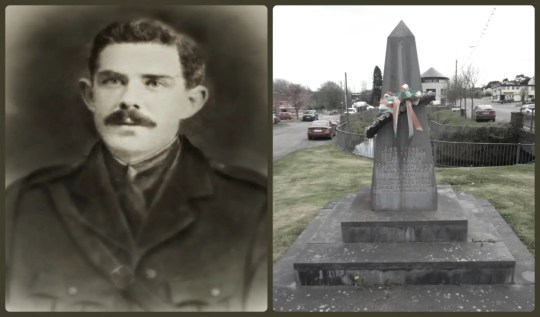
View On WordPress
#Andrew O&039;Sullivan#Anglo-Irish Treaty#Bishop of Cork#Co. Cork#Co. Kilkenny#Daniel Cohalan#David Kent#Denis Barry#Denis Barry Monument#Fr. Doyle#Frongoch Internment Camp#Grand Parade#Hunger-Striker#IRA#Irish Volunteer#Kildare#Minister of Defense#Newbridge Camp#Richard Mulcahy#Sinn Fein#Terrence MacSwiney#W.T. Cosgrove
7 notes
·
View notes
Text
Northern Ireland and the Irish Civil War
The treaty not only tore the future Irish Free State in two, but also poured gasoline on the raging sectarian and colonial violence in Northern Ireland. Because of British colonialism, the six counties that made up Northern Ireland were unionist and Protestant strongholds, where a minority held power because of wealth, land, and imperial might, and the majority of Catholics were discriminated…
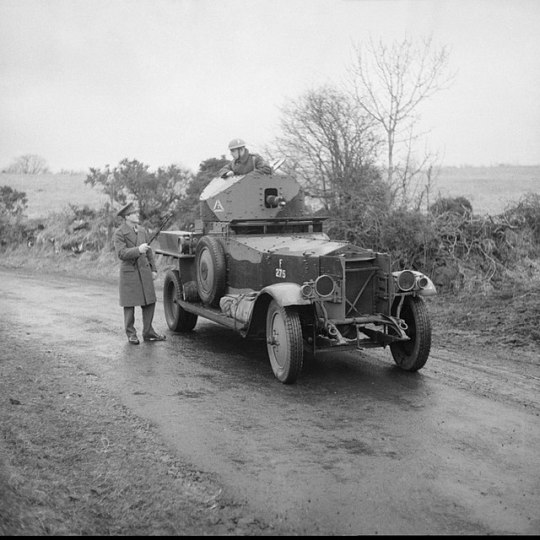
View On WordPress
#IRA#Ireland#Irish Border#irish civil war#Irish Republican Army#James Craig#Michael Collins#Northern Ireland#Richard Mulcahy
1 note
·
View note
Text
Episode 61 - the Irish Civil War: The Civic Guard Mutiny
When the Anglo-Irish Treaty was ratified, England withdrew all of its forces from Ireland (except for a contingent in Dublin). This included members of the Royal Irish Constabulary. Now the Provisional Government needs to create a new police force from scratch in the midst of a civil war. The government makes necessary compromises, leading to a mutiny within the new police force!
Support this…

View On WordPress
#Civic Guard#Civic Guard Mutiny#Garda Síochána#IRA#Ireland#irish civil war#Michael Collins#Podcast#Richard Mulcahy
0 notes
Text

Bad movie I have Moulin Rouge 2001
#Moulin Rouge#Nicole Kidman#Ewan McGregor#John Leguizamo#Jim Broadbent#Richard Roxburgh#Garry McDonald#Jacek Koman#Kerry Walker#Caroline O'Connor#Christine Anu#Natalie Mendoza#Lara Mulcahy#David Wenham#Kylie Minogue#Ozzy Osbourne#Deobia Oparei#Linal Haft#Keith Robinson#Peter Whitford#Norman Kaye#Arthur Dignam#Carole Skinner#Jonathan Hardy#Plácido Domingo#Kiruna Stamell#Anthony Young#Dee Donavan#Don Reid#Tara Morice
5 notes
·
View notes
Text
There are two kinds of novels in the collection of M*A*S*H novels.
Richard Hooker alone (or, I've occasionally read, with a ghost writer) wrote M*A*S*H, M*A*S*H Goes to Maine, and M*A*S*H Mania. These are episodic tales of madcap medical mayhem with quasi-technical surgery scenes. M*A*S*H is set in the Korean War, and was published in the sixties. The other two are set in Hooker's beloved rural Maine where Hawkeye and his three army bunkmates practice surgery together from the 50s through the mid-70s; Maine and Mania were published at either end of the 70s respectively.
Richard Hooker and William E. Butterworth (a pseudonym for W.E.B. Griffin, or vice versa, I dunno) co-wrote about a dozen novels published and set in the mid-70s. Some readers question whether Hooker was really involved in them but at least the first has a quasi-technical surgery scene. They're all titled M*A*S*H Goes To [some exotic location, often overseas], and are all non-episodic farces featuring mistaken identities, intercontinental airliner chases, authorities including actual contemporary public figures made to look foolish, and blatant misogyny. Hawkeye and Trapper John appear in each of them, at least more prominently than Duke and Oliver Jones do, and all feature reunions with past personnel or patients of the 4077th: Hot Lips (now Reverend Mother Emeritus Margaret Houlihan Wauchauf Wilson, R.N., Lt. Col., USA Ret., of the God Is Love In All Forms Christian Church, Inc.) and Father Mulcahy (now an archbishop and the Pope's chess and beer buddy) appear in almost all the novels. The world's greatest opera singer, an insufferable egotist who unfortunately is pretty much correct and who hangs out with a portly Arab oil prince, and a Cajun swampdweller who discovered oil on his land are former 4077th patients who appear in most or all the novels. Henry Blake is a general and is C.O. of Walter Reed Army Hospital. The Painless Pole is a henpecked fat old dentist in Michigan. Radar is CEO of his own fast-food empire and marries an opera singer, the sister of the insufferable egotist. Frank Burns remains a small doctor in a small town.
Hooker didn't like the tv series because it offended his conservatism. Both the Hooker/Butterworth novels and the later Hooker novels took occasional jabs at the tv series, especially for killing off Henry Blake. On almost the final page of the final novel, M*A*S*H Mania, Hooker has General Blake pay a visit to Crabapple Cove on the date of the airing of Abyssinia, Henry.
6 notes
·
View notes
Text
~*~ Blog Info ~*~

General Info
Hi! You can call me Robin-Tyler, R.T. or Robbie!
My pronouns are: she/her, they/them, or he/him
I’m okay with being referred to with masculine, feminine, and neutral gendered terms.
I live in the ancestral and unceded territory of the Aamjiwnaang people (Ontario, Canada).
I’m 24 years old. Minors are welcomed to unfollow/block me because I will sometimes post more mature content.
I will tag anything triggering with “tw (trigger)”. If I miss something, don’t be afraid to tell me. I’ll gladly add whatever someone feels needs a warning.
This is mainly a sports blog based around hockey and baseball. My favourite teams are the Toronto Maple Leafs, Philadelphia Flyers, Vancouver Canucks, Colorado Avalanche, Montreal Canadiens, Colorado Rockies, Pittsburgh Pirates, and Toronto Blue Jays
You can find information about some personalized tags, fanfic, and the current state of my masterlists under the cut!!

Babygirl Info
Hockey: Jack Campbell (#babygirl crazy catman), Tyson Jost (#babygirl chromatica), Cole Caufield (#babygirl small coffee), Mitch Marner (#babygirl wall bouncer), Mikko Rantanen (#babygirl peanut egg burger), Josh Anderson (#babygirl bench dresser)
Baseball: Zack Collins (#babygirl trailer trash), Tyler Heineman (#babygirl jr king), Cavan Biggio (#babygirl mimic), Bo Bichette (#babygirl man bun), Matt Chapman (#babygirl chapstick), Ross Stripling (#babygirl chicken strip), Ryan Borucki (#babygirl free elf), George Springer (#babygirl lovebug)
M*A*S*H: Father Francis Mulcahy (#babygirl himbo priest), Maxwell Klinger (#babygirl section 8), Margaret Houlihan (#babygirl cinnamon candy)
X-Files: Fox Mulder (#babygirl spooky), Dana Scully (#babygirl doctor fbi)

Babyboy Info
Hockey: Frederik Andersen (#babyboy pastry), Erik Källgren (#babyboy babygoalie), J.T. Compher (#babyboy jimothy timothy), Nick Suzuki (#babyboy small coffee enthusiast), T.J. Brodie (#babyboy mayor of chatham), James Reimer (#babyboy optimus reims)
Baseball: Kevin Gausman (#babyboy powdered donut), Randal Grichuk (#babyboy rocky mountain bird), Danny Jansen (#babyboy sports goggles), Alek Manoah (#babyboy mamas boy), Adam Cimber (#babyboy joe dirt), José Berríos (#babyboy mouthguard), Brian Serven (#babyboy love child), Jack Suwinski (#babyboy almighty), Trevor Richards (#babyboy silver fox)
M*A*S*H: B.J. Hunnicutt (#babyboy anything you want), Benjamin Franklin “Hawkeye” Pierce (#babyboy last of the mohicans)
X-Files: Alex Krycek (#babyboy fbi double agent)
Mass Effect: Kaidan Alenko (#babyboy biotic child)

Babyperson Info
Hockey: Alexander Kerfoot (#babyperson ivy leaguer), Cale Makar (#babyperson movie pun)
Baseball: Luke Maile (#babyperson mailbox), Jordan Romano (#babyperson canadas closer)
due South: Benton Fraser (#babyperson wolf tamer)

Other Info
Other content you may see on this blog includes: M*A*S*H, due South, X-Files, Zelda, Mario, Stardew Valley, Animal Crossing, Mass Effect, animals, Marvel, food, nature/plants, paranormal, and just anything I find interesting/appealing.
I sometimes write fanfiction. Right now, the fandoms I write for are hockey, baseball, M*A*S*H, X-Files, due South, Mass Effect, and Marvel. And, for reference, I write/take requests for self-inserts and ship pairings. The ship pairings include hockey and baseball rpf so do with that what you will.
I’ve had a rough mental time recently, so I’m changing my URL to, hopefully, get some much needed happiness. I’ll fix the masterlists once I’m feeling back to my old self. Sorry for the sudden change. I just need this for my own mental well-being.

9 notes
·
View notes